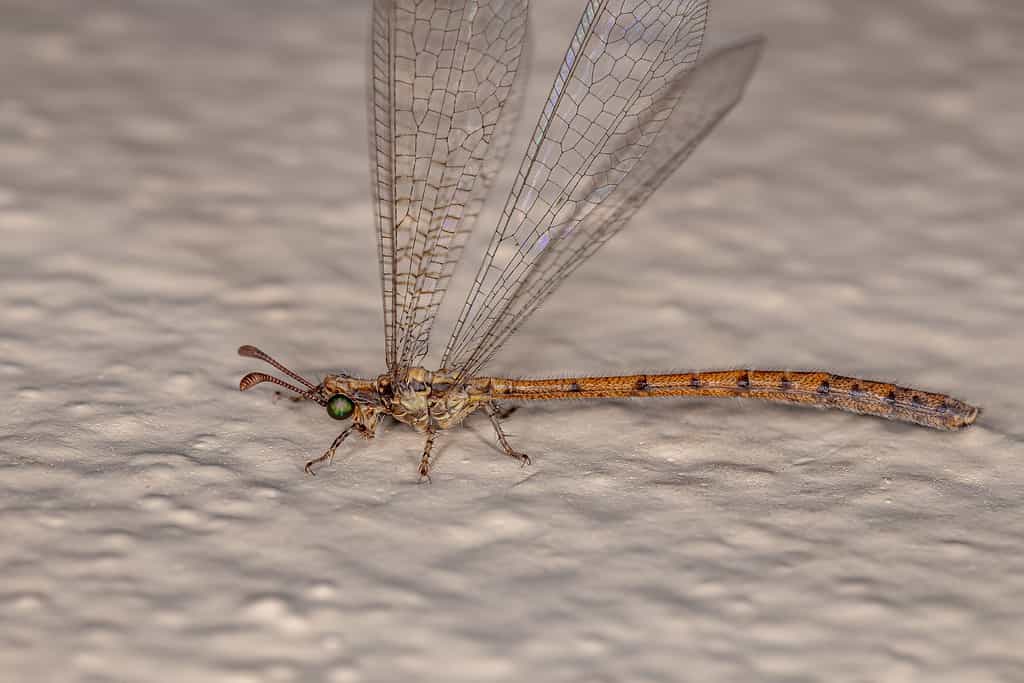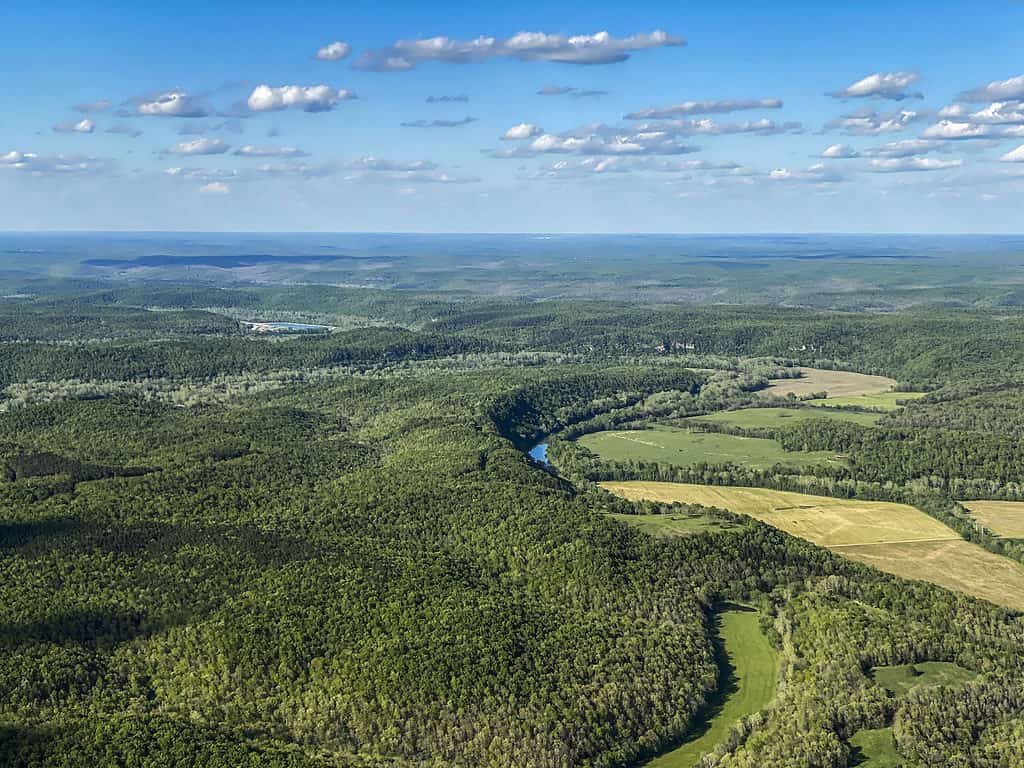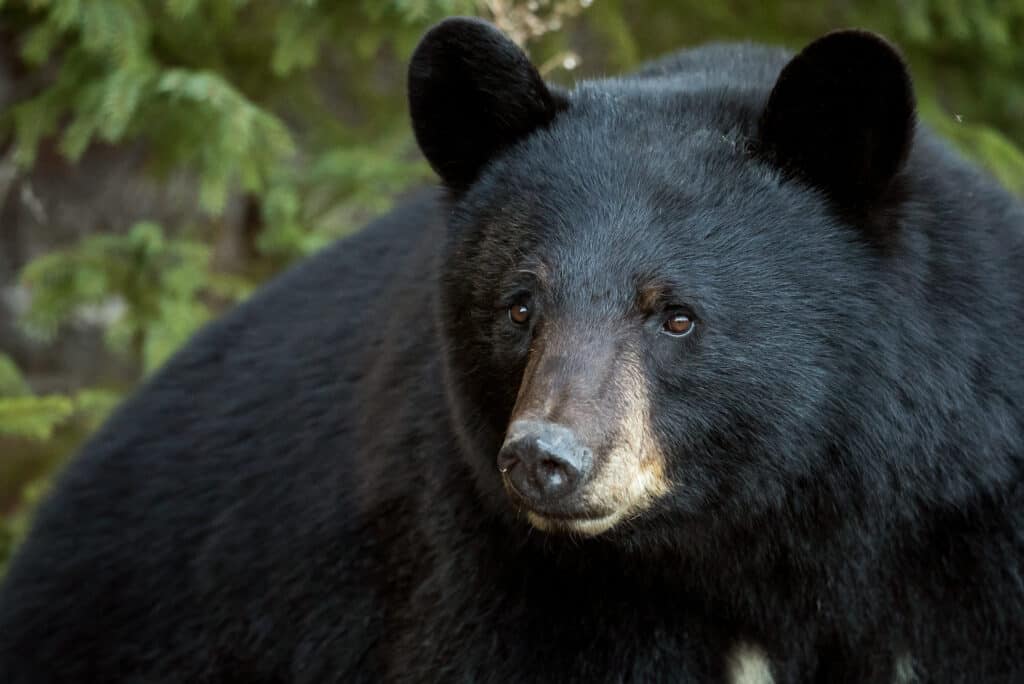The giant lacewing (Polystoechotes punctata, Neuroptera: Ithonidae) is a species of insect from a family that was abundant in the age of dinosaurs in the Jurassic Era. It was originally widely distributed throughout North America. However, it became extinct in eastern North America by the 1950s. Its eastern population started to decline for unknown causes, possibly due to the expansion of urban areas, suppression of forest fires, and the introduction of alien species. For example, ground beetles feed on lacewings while earthworms alter the soil’s texture.
Michael Skvarla, the director of Pennsylvania State University’s Insect Identification Lab, was a Ph.D. candidate in entomology at the University of Arkansas in 2012 when he chanced upon the insect at a Walmart in Arkansas.
Skvarla had gone shopping at a Walmart in Fayetteville, Arkansas. At some point, he spotted a giant, odd insect outside the building as he approached it. So he grabbed it, took it with him while he went shopping, and eventually mounted it at home. Unfortunately, he misidentified the insect as an antlion, a flying insect species. It wasn’t until eight years later before he discovered it was something far more uncommon: a prehistoric insect.

Unfortunately, in 2012, Dr. Skvarla misidentified the giant lacewing as an antlion.
©Vinicius R. Souza/Shutterstock.com
The Rediscovery of the Giant Lacewing
The giant lacewing became famous during the global lockdown occasioned by the COVID-19 pandemic, precisely in the fall of 2020. Skvarla was Entomology 432 (Insect Biodiversity and Evolution) lecturer at the Pennsylvania State University. Because of the lockdown, he had to teach the lab course via Zoom.
During a class, he used his personal insect collection as specimen samples while students watched remotely with loaner microscopes.
Skvarla tried to show the characteristics of a species he had previously referred to as an antlion. However, the traits didn’t exactly match those of the predatory insect with a funnel-shaped pit. In his opinion, it appeared more like a lacewing. The students started comparing features. The length of the bug’s wings was an obvious clue to its classification. According to the team, the insect’s wingspan — roughly 50 millimeters, or almost 2 inches — showed that it was not an antlion.
A discovery was made in real-time on Zoom!

The incredible discovery of the prehistoric giant lacewing happened during Dr. Skvarla’s Entomology class at the Pennsylvania State University.
©Michael Lanzarone/Shutterstock.com
An Incredible Experience
While recounting the incredible experience, Codey Mathis, a doctoral candidate in entomology, said, “we were watching what Dr. Skvarla saw under his microscope, and he’s talking about the features and then just kinda stops. We all realized together that the insect was not what it was labeled and was, in fact, a super-rare giant lacewing.”
“I still remember the feeling,” Mathis said. “It was so gratifying to know that the excitement doesn’t dim, the wonder isn’t lost. Here we were making a true discovery in the middle of an online lab course.”
Another entomology student at Pennsylvania State University, Louis Nastasi, said, “it was one of those experiences you don’t expect to have in a prerequisite lab course. Here we were, just looking at specimens to identify them, and all of a sudden, out of nowhere, this incredible new record pops up.
Skvarla and his team developed the new ID and ran molecular DNA tests on the sample for further confirmation. The findings are presented in a paper published in the Proceedings of the Entomological Society of Washington in November 2022.
Following its identification, he has stored the insect in the Frost Entomological Museum at Penn State University, where researchers and students can access it for additional study.
The Giant Lacewing: A Record-breaking Insect
The giant lacewing holds an incredible first record of the species in Arkansas. It’s also the first spotted in eastern North America in more than 50 years. More than anything else, the discovery points to the possible existence of undiscovered remnant populations of the Jurassic-age giant insect in the eastern United States that managed to avoid extinction. The loss of the giant lacewing from North America has varying theories but is still mostly unknown.
It’s still puzzling how the insect ended up outside Walmart. According to Skvarla’s estimation, the artificial lights could have drawn the giant lacewing. To reach them, he could have traveled quite a bit from its point of origin. “It could have been 100 years since it was even in this area — and it’s been years since it’s been spotted anywhere near it. The next closest place that they’ve been found was 1,200 miles away, so very unlikely it would have traveled that far,” reported Skvarla. “…a finding like this highlights that even in a run-of-the-mill situation, there are still many discoveries to make about insects.”
The Ozark Mountains: “A Hotspot for Biodiversity”
According to Skvarla, the discovery of a giant lacewing at an Arkansas Walmart may give more information regarding biodiversity and the state of the environment. “Entomology can function as a leading indicator for ecology,” Skvarla said. “The fact that this insect was spotted in a region that it hasn’t been seen in over half a century tells us something more broadly about the environment.”
As expected, scientists were ecstatic with this discovery in Fayetteville, an urban region in Arkansas. They even suggest that many other giant lacewings could be hiding away in distant areas of the Ozark Mountains. In their published report, Skvarla and his coauthor J. Ray Fisher of the Mississippi Entomological Museum at Mississippi State University, consider Ozark Mountains “a hotspot for biodiversity.”
Many endemic species, including 68 species of insects, are recorded from the Ozarks. At least 58 species of plants and animals with divergent geographic distributions have representatives there. However, the scientists note that despite having similar biodiversity, the area has received less research than places like Southern Appalachians.

According to experts, many other giant lacewings could be hiding away in distant areas of the Ozark Mountains.
©DWBMedias/Shutterstock.com
Where Are the Ozarks Mountains?
The Ozark Mountains, sometimes called the Ozark Highlands, or the Ozark Plateau, spans five states, including Missouri, Arkansas, Oklahoma, and the southeast corner of Kansas. They stretch from Interstate 40 in central Arkansas to Interstate 70 in central Missouri, taking up a sizable chunk of northern Arkansas and most of the southern half of Missouri.
They are a physiographic, geologic, and cultural highland region. The Springfield Plateau, the Salem Plateau, the Boston Mountains, and the St. Francois Mountains are the four smaller geographic divisions of the Ozarks. The area benefits from a pleasant, moderate temperature, clean lakes and rivers, and fresh mountain air.
Some significant public lands, including the Ouachita National Forest, the Ozark-Saint Francis National Forest, the Mark Twain National Forest, and the Ozark National Scenic Riverways, are located in the Ozarks.
The region boasts a plethora of caves, caverns, sparkling springs, sinkholes, waterfalls, and lakes. The Lake of the Ozarks is one of the many existing artificial sites. Blanchard Springs Caverns and 300 miles of hiking trails are two of the wonders of the over a million-acre forest beyond the mountains.

Aerial view of the Ozarks, also known as the Ozark Mountains or Ozark Plateau.
© – License
Characteristics of the Ozark Mountains in Arkansas
The geography of the Ozarks is the most mountainous in northwest Arkansas. Rugged hills, steep bluffs, meandering rivers and streams, waterfalls, woods, lakes, meadows, and a variety of flora and fauna are just a few of the stunning natural features found there.
The Ozarks comprise the biggest expanse of rocky terrain in Arkansas. The tallest peaks of the Ozark Mountains, several of which rise beyond 2,000 feet, are found in the Boston Mountains in Northwest Arkansas. The Ozark National Forest is home to some of these mountains, including the highest mountain in Arkansas.
The Arkansas Delta region borders the northeastern portion of the Arkansas Ozarks. It features various rivers and varied sceneries. Hunting, fishing, boating, hiking, biking, and golfing are all possible amid the 17,000 acres of natural splendor that make up the Lake of the Ozarks State Park.
Wildlife in the Ozark Mountains
White-tailed deer, bald eagles, elk, beavers, black bears, mink, coyotes, bobcats, and wild turkeys are just a few of the wildlife that thrive in the Ozark Mountains. These animals and others can live, hunt, and rear their young in the highlands.
Alligators are one of the most prevalent species in the Ozarks. American black bear is the species of bear most commonly found in the Ozark Highlands. Bat species, including tricolored and big brown bats, find a perfect habitat in the vast cave networks of the region.
Some others include the nine-banded armadillo, pileated woodpecker, river otter, belted kingfisher, southern red-backed salamander, muskrat, and pickerel frog.
Hundreds of bird species call the Ozarks home. The reason is partly attributable to its location along the Mississippi Flyway, a primary bird migration path from the Hudson Bay and other regions of northern Canada through the United States to the Gulf of Mexico.
An abundance of trees, mostly oak-hickory, can be found throughout the Ozarks. In addition, there are diverse pine and eastern juniper populations, notably in the range’s southernmost region.
The Ozark Mountains in Arkansas and Missouri are the only places you can find the Ozark chinquapin. The American chestnut and the Ozark chinquapin are both members of the Chestnut family. The tree used to be widespread in the Ozarks, but habitat loss and disease have caused it to decline recently.

American black bear is the species of bear most commonly found in the Ozark Highlands.
©iStock.com/Brittany Crossman
The photo featured at the top of this post is © Kevmin, CC BY-SA 3.0
Thank you for reading! Have some feedback for us? Contact the AZ Animals editorial team.






